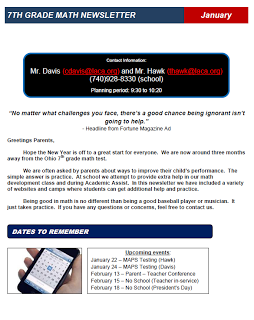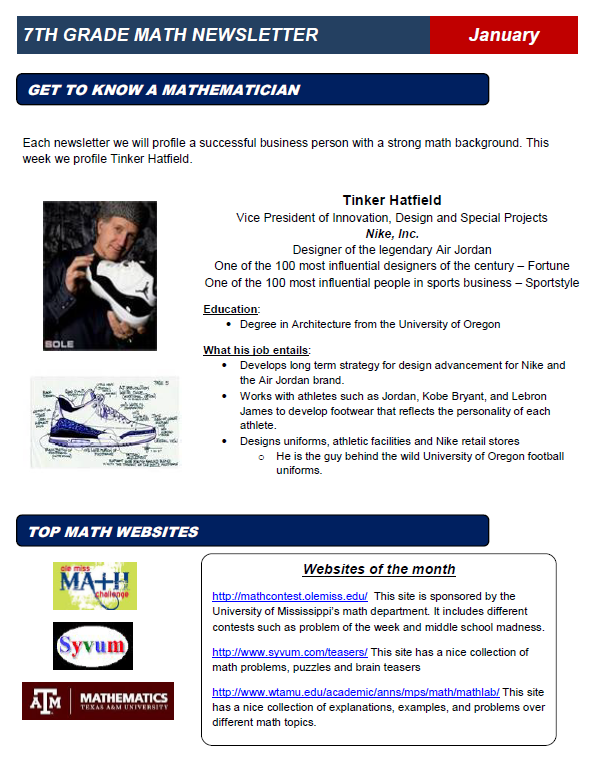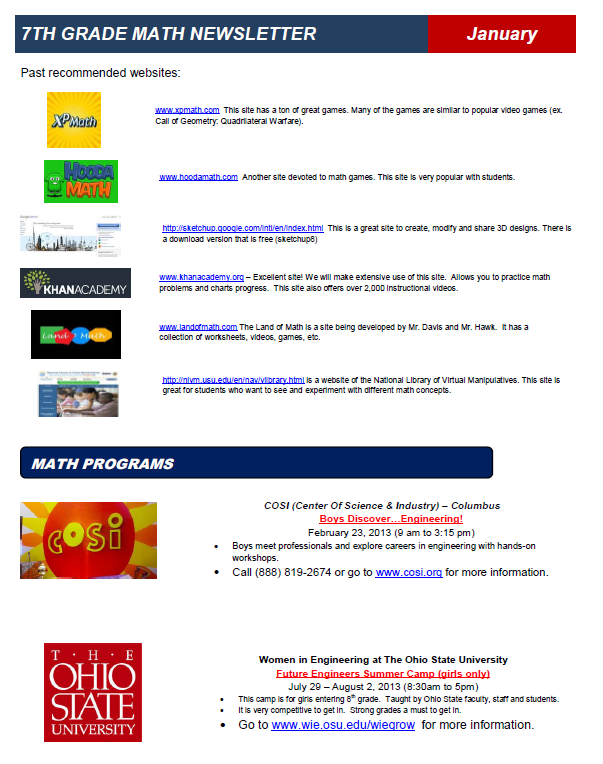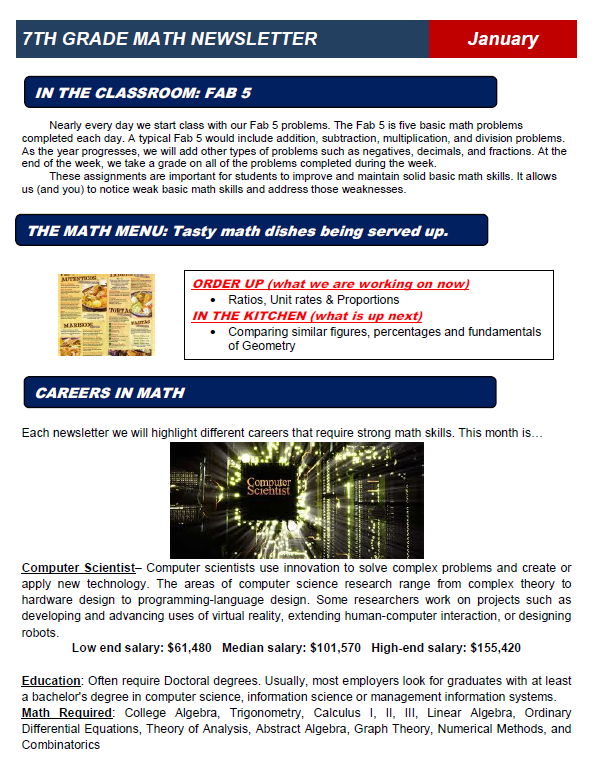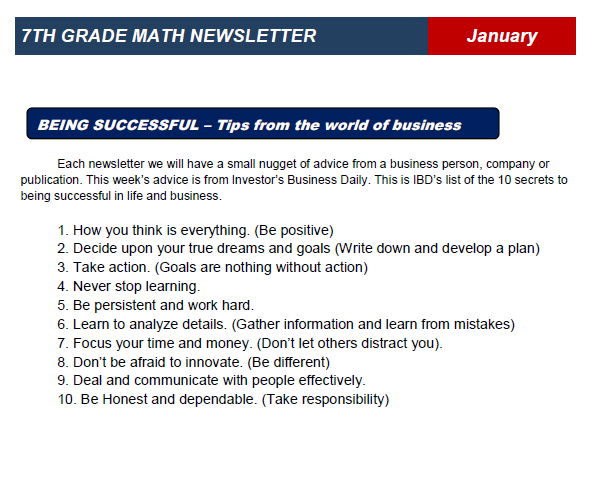A dozen ways to help your kids with math this summer. (Stopping the Summer Slide)
/Teachers have a Love/Hate relationship with Summer. Sure the time off to relax and spend time with their family is neat. But there is a dark cloud looming on the horizon. I'm talking of course of the Summer Slide.
The Summer Slide is students amazing ability to forget everything that they just learned the previous 9 months. As teachers, we know its coming yet we are still stupefied by its reappearance each year.
As a parent, what can you do to stop the Summer Slide (or a least slow it down) and give your child an edge this upcoming school year? Glad you asked!
You could make your child sit down and do math worksheets, but that would be just pure misery for everyone involved. Instead, I have included a dozen low stress, easy ways you can engage your child in discussions about math this summer (without your kids realizing you are working on math).
#1 - "How Much Longer" Situations
We have all been there. You taking a long trip (a vacation, visiting Aunt Doris or going to the store) and the kids keep asking you "How much longer?," or "When will we be there?" This is a great time to work on unit rates, reasoning and estimation skills.
Let's say you are driving to Nashville, TN and you have another 150 miles until you arrive. Of course the brats (your kids not the food item - even though that might make the story more interesting. Also, I'm sure your kids are actually quite lovely and a joy to be around on a long road trip.) in the back seat start asking "How much longer?"
Instead of just telling them how much longer (It's not going to keep them quite any way) you can give them your numbers and discuss how much longer they think it will be. This gives you chance to guide them through the process of thinking mathematically.
For example, let's say you are traveling 60 miles per hour and you have 150 miles to travel. How much longer. The answer is 2 hour and 1/2 hours (or 2 hours 30 minutes). The goal is not to necessarily get the right answer (It would be nice), but instead get your child to think about how to use the numbers to get the answer.
There are many ways to get this answer. For example, maybe your child realizes that if you travel 60 miles in 1 hour, you would travel 120 in 2 hours and 180 miles in 3 hours. 180 miles is farther than you are actually going so the time will be between 2 and 3 hours. Another way could be that your kid realizes that 1 mile = 1 minute so the trip will take 150 minutes and 150 minutes is the same as 2 hours with another 30 minutes.
You can then build on this by asking how long it would take if you were traveling 80 miles per hour (not including the quality time spent with a local police officer discussing speeding laws in the state of Tennessee).
This doesn't need to be limited to just driving and miles per hour. Let's say you are at a baseball game (For example a Lehigh Valley Iron Pigs minor league game) this summer and the first 2 innings take a total of 40 minutes. At this rate how long will the game take to complete?
#2 - Finding the cost of gas on a trip
Let's say you are once again heading out on vacation, this time from San Francisco to Bend, Oregon (sounds like you are having a great summer so far!!). The distance you need to travel is 480 miles each way. Your family has two vehicles to select from: a mini-van which gets 20 miles per gallon or a sedan which gets 30 miles per gallon.
First, you could have your child figure out how many gallons you will need for each. The mini van will need 24 gallons of gas one way or 48 gallons of gas round trip. The sedan will need 16 gallons one way or 32 total gallons. The process of getting these numbers (without a calculator or paper) can be done a variety of ways. For the mini van you child might realize that 5 gallons = 100 miles or that for the sedan 10 gallons = 300 miles.
Once your child realizes that it takes an additional 16 gallons of gas for the round trip with a mini van they can then calculate the cost. For example, if the cost for a gallon of gas is $3 it means that it will cost the family an additional $48 in gas. You could then have a discussion about the value of paying the extra $48 but having the extra room and comfort of a mini van.
You can even use this to find a common multiple of the numbers 20 and 30 (which is 60). For example, you would need 3 gallons of gas to travel 60 miles with a mini van and 2 gallons of gas with a sedan.
#3 - A visit to the Land of Unit Rates (aka the Grocery Store)
It doesn't matter if it's Piggly Wiggly, Wegmans, or Krogers (or any of the other fine grocery chains) there is no better place to see unit rates in action than the grocery store.
Just buy two 1 pound packages and use the $1 you saved to get a snickers bar!
As you travel through the store you will see unit rates all around you (Don't be afraid). Grocery stores will often have signs like "5 melons for $10" or "3 boxes of Mac and Cheese for $5". In most cases you DON'T need to buy 5 melons or 3 boxes of Mac and Cheese. These are just ways to manipulate you into buying more items than you planned on buying. You can just buy one Melon or Mac and Cheese. But what is the cost?
If you take the cost ($) and divide it by the number of items (melons for example) you will find the cost for each melon. So $10 divided by 5 = 2 or $2 per melon. What if you divided the number of items (melons) by the cost ($)? You would find how many melons you can get for $1. In this example you would get 0.5 melons per dollar (As a general rule grocery stores frown on you ripping apart a melon and telling the cashier you just need a dollars worth). Not only can you discuss with you child how to find the cost for each item, but you can talk about which form of unit rate makes sense.
The Mac and Cheese example is a bit more difficult than the Melon example because when you divide the cost ($5) by the number of items (3 boxes) you don't get a whole number, but instead a decimal. This is a great time to use your estimation skills. Most kids will realize that the boxes cost for than a dollar each. A few for more will realize that if a box was $2 each that would be $6 total which is $1 to much. The cost is $1.67 per box. You can guide you child to under stand the cost is closer to $2 a box than $1 a box.
Grocery stores love to create situations where you think you are getting the best deal but they are really tricking you. Generally, if buy a larger container of food there is usually a bit of discount on the unit rate (less per ounce, pound or doughnut) BUT not always! Because stores have trained us to thing bigger is the better deal people will blindly get the larger package. To the left is an example from my local Krogers. Of the 7 or 8 people that bought strawberries while I was there, all but one (yes it was me) bought the 2 pound container of strawberries. You can point out examples of this as you meander through the store.
#4 - Let's Play Ball (Sports and Math)
If you have a child that is interested in sports you have a natural connection to math. It's impossible to watch a game on TV (or on your phone or computer) and not notice all the stats used. Just the basic act of watching a game with your child (in person or on TV) and discussing the meaning of different stats (ERA, WAR, OBP, Batting average, slugging percentage, strike to ball ratio and so many more!!!) and how they are calculated can help a child think about math.
You can use these stats to make arguments about which player you think is the best. Often times when I attempt to talk to kids about who they think is the better player (could be football, basketball or any sport) their argument is that your guy "sucks." By understanding statistics the kids can make better arguments using data to support their opinion (This will also make the Language Arts teachers happy).
Want to amp it up a bit and still have fun? You can join a fantasy league (ESPN, Fan Duel, Draft Kings for example), play the board game Strat-O-Matic (they have games for almost every sport), or even play baseball video games. When you are in a fantasy league or playing games you can use math to justify your decisions.
#5 - Running a Lemonade Stand
A great ways for kids to make the connect to math and business is to let them run their own Lemonade stand. I let my kids have a lemonade stand a couple of times a year (once when we have a garage sale) and it's a lot of fun, but more importantly there are a ton of lessons to be learned from this activity.
I have my kids keep track of all their expenses (cups, ice, lemonade packets/lemons etc.). At the end of the lemonade sale we talk about Gross Profit, expenses and Net Profit. We also talk about the cost to make a cup of lemonade (cup, ice, lemonade) and our profit per cup.
To help their bottom line I buy all their unused inventory (extra cups and unused ice). For example, if they spent $8 on cups but only used 1/4 of the cups we will use $2 as their cost for cups. But, I will discuss how this would impact their business if I didn't do this.
#6 - Become Bob the Builder - build something... anything!
One of the best things a kid can do to help their overall math skills is to just build something. A table, workbench, ramp, dog house it doesn't matter. The act of making something will help with their geometric and measuring skills.
The nice thing about building items is that it's messy, hands on and requires problem solving skills (This is nice IF your kids clean up their mess!). Usually, the first time your kid attempts to build something it will be a random collection of materials that will be nothing like they were hoping to build. This is a great chance to give a little guidance/advice about angles, measurements and sketching out a design before starting.
Please: Do NOT just turn you kids loose with power tools (drills, band saws etc.) unsupervised. You can give your kids freedom, BUT you need to make sure they are safe!
#7 How far away is the lightning (or Fireworks)?
An easy way to sneak in a little math during the 4th of July or one of the many summer storms is to calculate the distance of the firework's explosion or the lightning bolt. This gives you a chance to talk about the difference between the speed of light vs. the speed of sound (You are welcome Science teachers).
The speed of light is so fast that virtually no time elapses from when an event happens to the time you see it. The speed of sound is much slower (375 yards/1125 feet per second). For estimation purposes you can figure about 400 yards per or 1,200 feet per second. A mile is 1760 yards or 5280 feet.
When you see a lightning bolt (or firework) time the number of seconds until you hear the sound. Every second = about 400 yards. So 4 seconds is just a little less than a mile away and 5 seconds is just about a mile.
#8 - Raise a Garden
If you live in downtown Chicago this might be a bit harder, but for the rest of you this is another way to mix in a little math (and get some tasty produce!). One of the keys to a successful garden is the planning and layout. What are the dimensions of your garden? What ways could you layout your garden to maximize your space.
You can track your garden expenses (seeds, plants, fertilizer, etc) and your total harvest (we have a little weight scale we use) though out the summer. If you want to amp up your garden math you can compare your expenses to the amount of money you would have spent. Was their any kind of savings? Even if it was more expensive you can talk about the health benefits of raising you own produce.
If you want to take this to another level you can have your kids set up a small farmers stand (or go to a farmers market) to sell their produce. Just like with the Lemonade Stand, this is a good way to teach some business skills along with math skills. (As a side note: I actually did this when I was in high school. As part of a project for Future Farmers of America (no I'm not a farmer) I raised cantaloupe for 3 summers. Each morning I would harvest the muskmelon, weigh and price each one. I would put my produce in a wheelbarrow and put out by the road with a couple of signs. I would play basketball while waiting for customers to arrive. I would usually sell out of produce by lunch. I made nearly $1,000 each summer!)
#9 - Lawn Mowing Business - the side hustle
There was a time when it was common for kids to make a little pocket money by mowing the neighbors yards. Maybe it's because of all the lawn mowing services that have popped up over the years, but there seems to be fewer kids mowing lawns today. But, I would argue that the time has never been better for a teen to start a small neighborhood mowing business. Because kids are usually just using a push mower, their expenses are much less than the larger lawn mowing companies (along with not worrying about employee benefits, accountant cost, marketing, etc.). As a result, the kids can charge a lot less and still make a good profit.
Also, there are a lot of adults that remember mowing lawns when they were a kid and respect a kid today willing to work hard. And with less kids to compete with, the market is all yours.
What about the Math? Alright already!
First, your child is going to need to determine what they will charge. Is it going to be by the hour? A set rate per yard/lot? Based on square footage? Most of the lots in our neighborhood are roughly the same size so my son charges a flat rate per yard (double if the yard is actually 2 lots). How often are you going to mow? Could you charge a one time fee for the entire summer? What would you charge for this one time fee (remember: it should include a savings for the customer)?
Once you know the rate you will charge (which is you gross income) you can calculate your gross income per hour. For example, my son charges $15 dollars per yard. It takes him about 45 minutes to mow a yard. When he was calculating what he makes per hour he figured that he was making $5 for every 15 minutes. There are 4 groups of 15 minutes in an hour so he is making $20 per hour.
You can have your kids estimate their gas expenses by finding out how much gas is needed to mow a yard. For example, if it takes a gallon of gas (let's say it's $3 per gallon) to mow two yards that means it cost $1.50 in gas to mow a yard. You can find your net profit by taking you gross income and subtracting the expenses. If you want to take the to another level you can charge a rental fee for use of the mower and maybe include the cost to maintain the mower.
Other things you could do: What will you make per month from a customer? How much will you make if you mow 5 lawns during the summer. How many lawns would you need to mow to make a certain amount of money such as $1,000 or $5,000? How many hours would it take to make your goal?
#10 - Estimating the Savings and Prices when Shopping
This is a great life long skill for kids to learn. This is easy to talk about in the flow of a conversation. You're shopping with you child and there is a sale! Let's say there is a 20% off sale on all lawn mowers at your local John Deere dealer. You are looking at a $2,000 mower (Apparently the lawn mowing business is working out quite well!). How much will you save? What is your cost? Many kids struggle with understanding how easy it is to find 10% of a number. In this example, 10% of $2,000 is $200. So, 20% savings would be $400 (double the 10% savings). If you are saving $400 that means that the sale price would be $1,600 (2,000 - 400 = 1,600). You can do this with any product (yes even toothpaste!).
You can then take this skill and apply this to calculating tips or taxes. For example, you are Red Lobster with your family. The bill is for $80 and you decide to leave a 15% tip. How much will you leave? If 10% = $8 then 5% = $4 so 15% = $12 tip (8 + 4 = 12).
#11 - Estimating the size of a crowd
You are at a concert, movie, baseball game or any place with a gathering of people. One simple thing to do is to estimate the size of the crowd. When you do this, don't just have your child randomly scream out a number. Have them explain how they got the number. For example, perhaps they noticed that their appears to be about 9 people in each row and since there is 100 rows the crowd is about 900 people. Maybe they count how many people are in a section and multiply that by the number of sections. You can also estimate what percent of the crowd is male or female or what percent of the crowd is rooting for a certain team.
You can do this with other things like how many Coins or M&Ms are in a jar. The correct answer is not important, the focus is on the process of trying to figure out the answer. I remember reading about how one of the questions Google used to ask possible employees was "How long would it take to wash all the windows in Seattle?" Obviously, there is no way to determine exactly how long it would take. They are just trying to see how you would TRY to solve this problem.
#12 Being Bullish on the Stock Market
One of the best things you can do as a parent is to introduce your child to how money works and more specifically how the stock market works. You don't need to be a stock picking guru or understand how Options work. Just by demystifying the world of money can help your child achieve financial freedom as an adult.
But lets be honest, most of the information you will find about the stock market will be very dry and boring. You don't want to bore you kid to death (Unless this is some form of punishment for not cleaning up their room) so what can you do? Two words: Mad Money.
Mad Money is a television show hosted by Jim Cramer on CNBC at 6pm EST. The show is sort of a cross between the stock market and MTV (When is was still cool). It is a high energy, fast paced show with lots of flashy graphics.
From a math stand point the show is packed with percentages, graphs/charts, ratios and all the different financial terms that you would expect. The show will have from time to time a chartologist to explain how they read and use different charts and graphs to make their stock picking decisions. Mad Money will have on different business leaders to discuss the metrics that they feel are important to their businesses success.
It's a fun show to watch with your kids and an easy way to start discussions about investing and money.
Wrap Up
There you have it: A dozen different ways to keep your kids engaged with math during the summer without using a single worksheet. For me, I try not to get bogged down in working on basic skills (not that there is anything wrong with that) but instead try to focus on situations that require math as an adult.
If you are going to focus on your child's individual skills (which is a good thing) I would highly suggest finding games and puzzles (you can find some of these on our website) that make the experience a bit more fun for you kids.
Wishing you a happy and productive summer.








